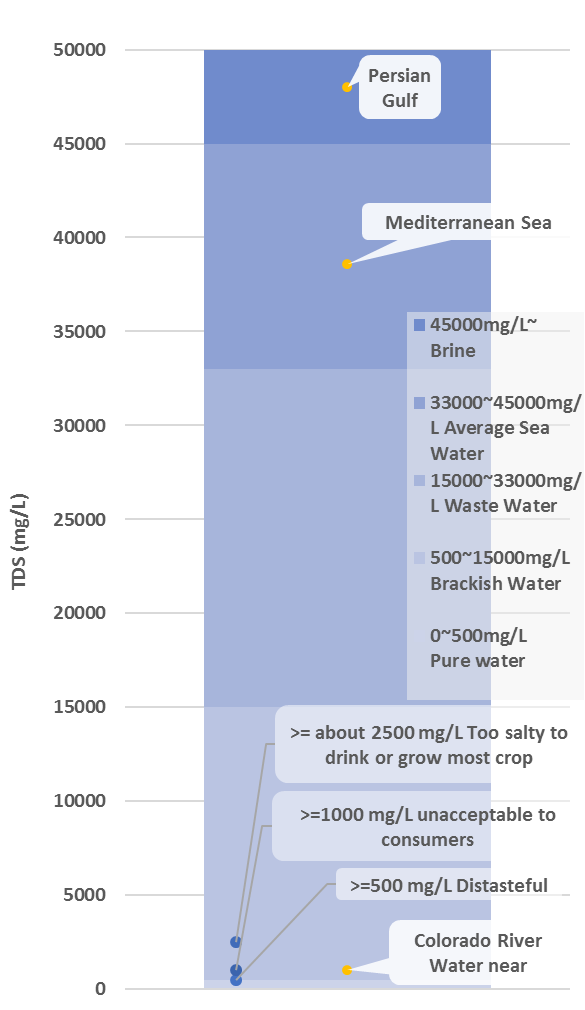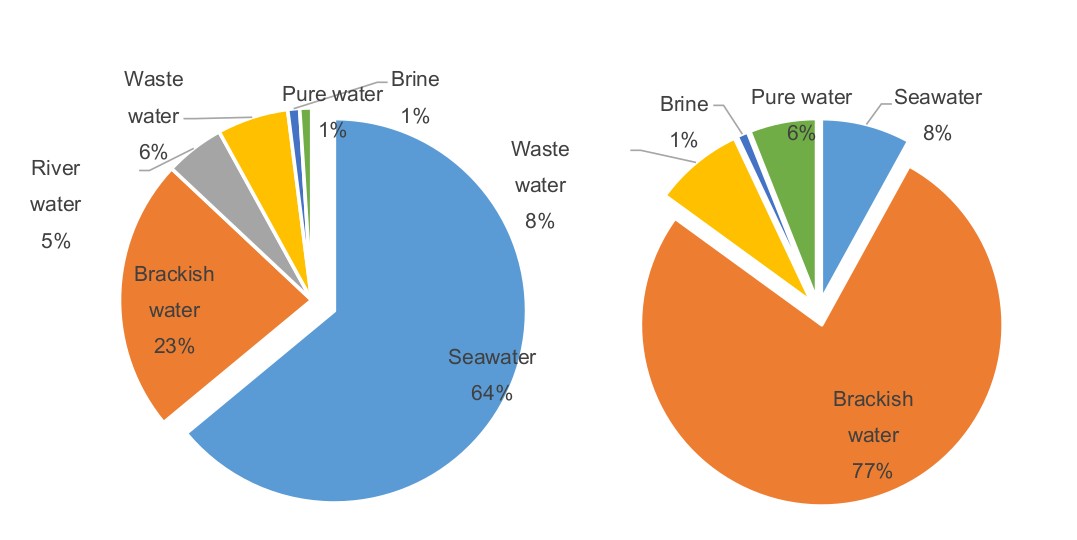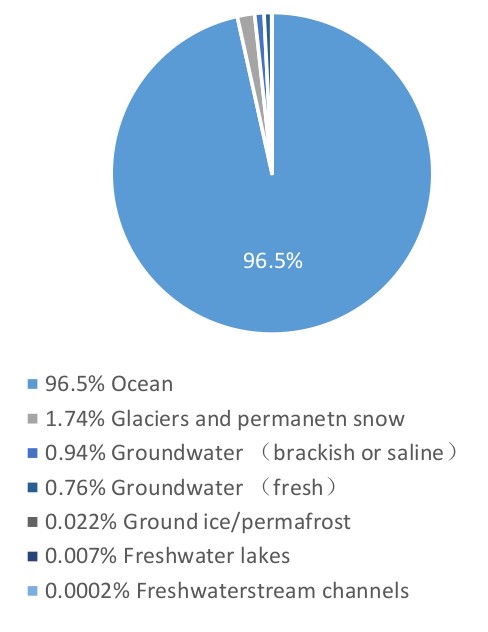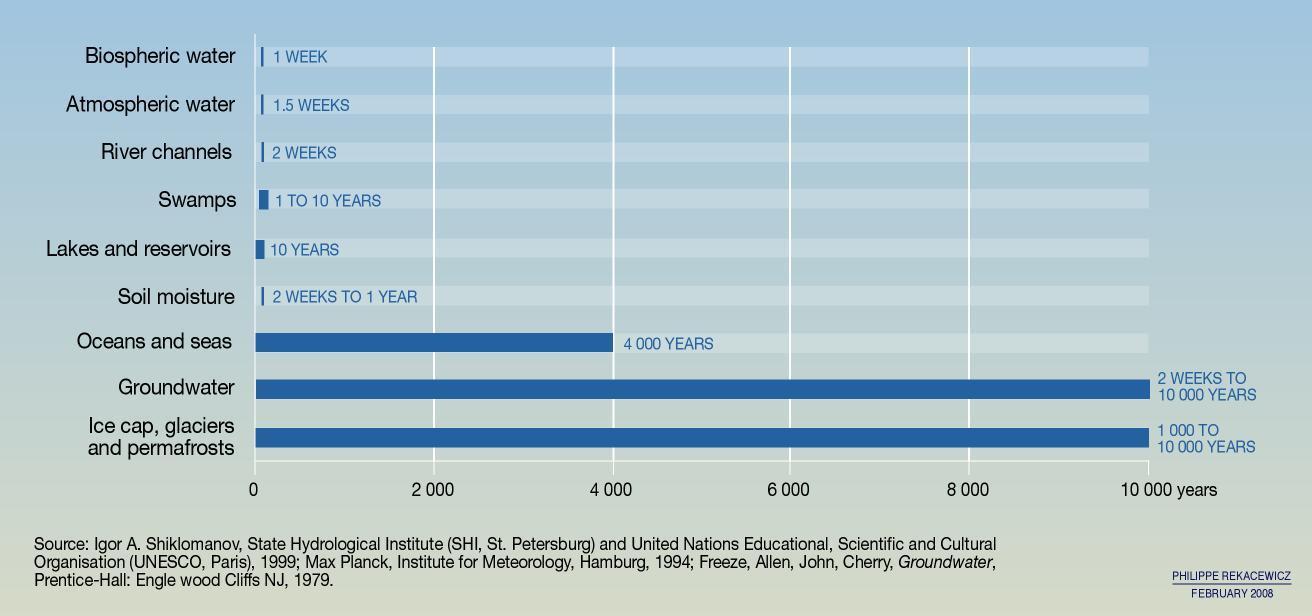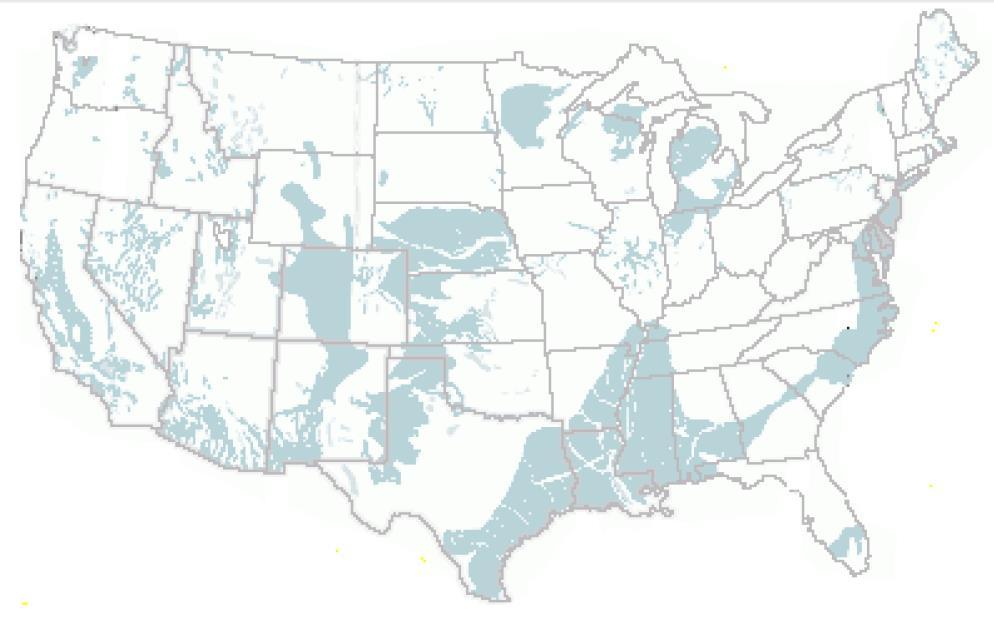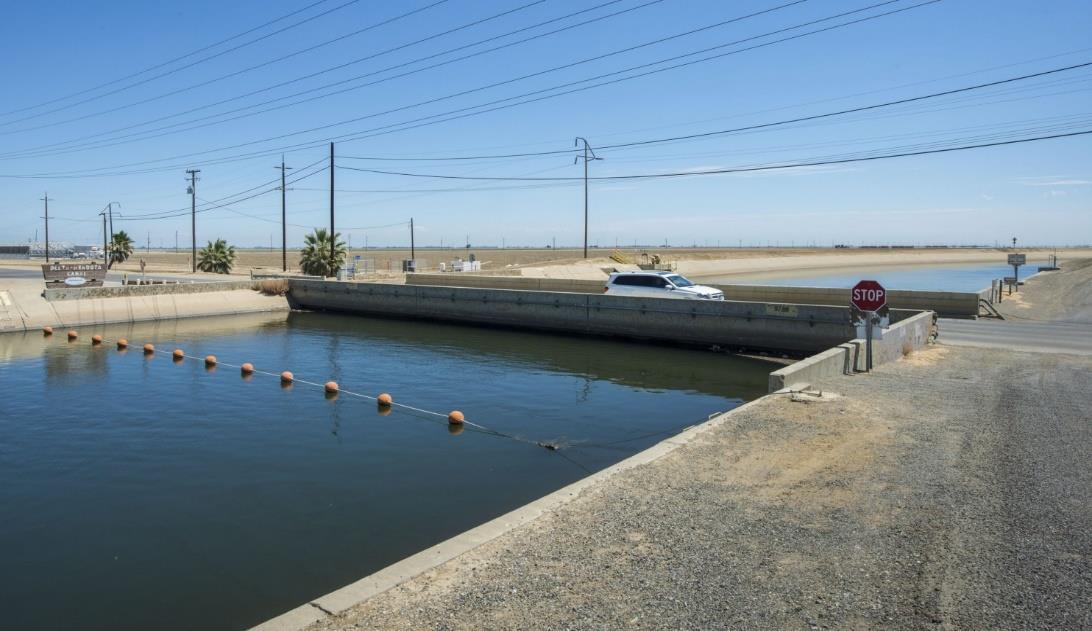Sea vs Barckish Water
What we choose as raw material in water industry is as important as in food industry. The basic cost, design, engineering, equipment procurement, and construction spending on intakes and outfalls, are estimated to total 5 to 7 percent of capital costs for desalination plants (GWI, 2006a). On this page, we will explain how we consider the trend in the desalination resource water, and how our project is related.
Contents
Preview: TDS & Salinty
Figure 6.2.0 TDS degree chart
Including source water salinity, water example salinity and some salinity standard.
Zander et al, 2008
How to define the salinity? Desalination industry typically use total dissolved solids (TDS) as one of the measure standards. It is a measure of all the substances, whether inorganic or organic, molecular, ionized or micro-granular, that are small enough not to filter by a filter with 2 mm pores(Zander et al, 2008).
This measure is not only use in desalination industry but also study of water quality in fresh water system. From definition, TDS cannot point out the actual pollutant, yet it is able to indicate the presence of a wide array of contaminants and serve as the primary check of water quality.
TDS is only a measure, thus, the next question will be how it corresponds to other salinity related protocols, sensory index and so on. The desalination industry also use conductivity as basic measure, too. TDS and conductivity can convert in two equation: 1.4μS/cm=1ppm or 2μS/cm=1ppm(Zander et al, 2008). As Figure 6.2.0, we list the salinity division of different desalination feedwater. Also, we add salinity data of few water samples and the TDS standard for usable water to get a bigger view of how TDS is applied.
General information
There’re six kinds of water source as figure 6.2.1. In last section, we identify their different TDS range. The water has 500~15000mg/L is called brackish water and most of them are groundwater (GWI, 2006b). As Figure 6.2.1, every country‘s desalination industry has different major water source depending on their unique geological features. For example, most of Spain’s territory is close to the sea. Therefore, most of its source water is seawater. The desalination process usually focuse on either seawater or brackish water. In normal circumstance, what feed water the area use depends on which water is easier to get.
Yet, when we consider this question in global scale, the distance can no longer be the main standard. We have to analyze the difference of these two feed water in several other aspects such as supply capacity.
Supply Capacity
There’s no doubt if the time frozen, seawater will have more water to satisfy global need. As Figure 6.2.2, seawater has 96.5% of water preserve, yet, brackish water only has 0.94% (Shiklomanov, 1993).
However, water is not changeless. What global water demand is truly chasing right now is the regeneration capacity of water resources. Therefore, when we assess these two feed water, regeneration capacity is important as well. As Figure 6.2.3, scientists estimated seawater will have 4000 years of reserved time. Yet, groundwater’s reserved time is estimated to 2 weeks to 10000 years. (NEP, 2008) It’s because the regeneration capacity of groundwater is harder to access. It is a more changeable water resource comparing to seawater.
Groundwater overusing in Tianjin
Beijing the capital of China, Tianjin and Hubei districts are its surrounding area, suffering from water stress for long time. Beijing, Tianjin and Hubei district is a perfect example supporting the low regeneration capacity of groundwater when misuse it.
The area of groundwater depression cone reaches 400 square kilometers, the underground water level will drop about 1 meters every year, and groundwater storage will unwater 280 thousand tons everyday(Tan,H,2013).
Over all, the seawater might have more advantages than brackish water due to its stability and its large water preservation capacity.
Environmental concerns
Figure 6.2.4 Areas where subsidence has been attributed
to groundwater withdrawal in US. (Zander, 2008)
SOURCE: Galloway et al. (1999)
Figure 6.2.5 The Russell Avenue Bridge, over
the Delta Mendota Canal in Firebaugh, Calif, US.
The drought has caused the bridge to subside until
there’s almost no space between bottom of bridge decking
and canal water surface.
SOURCE: California Department of Water Resources, 2015
As a rather new industry, desalination truly has several environment concerns remain unsolved. In this intake section, both seawater and brackish water has problems when it comes to expanded production.
Seawater extraction design has to avoid mariculture areas or extracting small wild creatures including shrimp and shells. The damage those creatures cause is called impingement and/or entrainment. This is rather easy to achieve.
However, brackish water has a bigger disadvantage. In large demand, brackish water extraction might cause ground settlement and relating problems. As Figure 6.2.4, land subsidence resulting from removal of groundwater has affected areas in 45 states in US and ranges from regional lowering to ground failure and collapse (Galloway et al., 1999; NRC, 1991).
California drought
2015 is California’s fourth year of drought (Smith, 2015). The study done by NASA’s Jet Propulsion Laboratory shows the ground is sinking nearly two inches each month in some places.
Land in Central California’s agricultural region is sinking so quickly because of the state’s historic drought that it is forcing farmers to spend millions of dollars upgrading irrigation canals and putting roads, bridges and other infrastructure at risk. This state owns the second biggest desalination capacity among US. (GWI, 2006b) As Figure 6.2.1 shows, most of US desalination focus on brackish water.
Intake Cost
| Water Source | Energy Used per Cubic Meter of Water (kWh/m^3) |
|---|---|
| Pumping groundwater 61.0m | 0.24 |
| Treatment of surface water | 0.36 |
| Brackish water desalination | 0.3~1.4 |
| Water recycling (no conveyance) | 0.3~1.0 |
| Conveyance of water (examples): | |
| Colorado River Aqueduct to San Diego 247.9km | 1.6 |
| San Francisco Bay Delta to San Diego 812.7km | 2.6 |
| Seawater desalination (no conveyance) | 3.4~4.5 |
Table 6.2.1 Comparison of Energy Use for Different Water Sources in California.
Numbers reflect cited case-study examples and are not statewide averages.
SOURCE: Cohen et al. (2004)
Without considering pretreatment and desalination costs, brackish water intake is much more expensive. Compare to seawater which mostly use open-water intake on costal, brackish water extracting from underground requires more energy. As Table 6.2.1 shows, pumping groundwater from 61.0m requires 0.24 kWh/m^3. This is about 20% of brackish water desalination process cost.
In the other hand, the cost of seawater intake goes to the intake design which avoiding impingement and/or entrainment. For example, some intake screens can be back-flushed with compressed air. These screens have no moving parts, operate with a very low velocity (to mitigate impingement), and are generally referred to as “passive screens.”(Zander et al, 2008).
Technical difficulty
As table 6.2.1 shows, seawater desalination requires about four times energy than brackish water and about 10 times energy than normal water treatment. This is the main reason why brackish water is more favored by desalination factory when it comes to reality. The higher salinity source water has, the more energy it needs and more processes it has to go through.
Since our project target lower energy cost, seawater desalination will provide more space to play. Our purpose is to bring this source water more competitively than brackish water. We will take this question to chapter 2 and discuss further.
Conclusion
Last year, Imperial college iGEM team has done a water report describing the details of global water stress problem. There is no ‘creation’ of ‘new’ water on the planet. (NEP, 2008) The difficulties we face right now is the recycling and renewing ability of natural water body and human recycling cannot compete with continues water demand of human activities.
In a narrow sense, the profit should be the main focus for an industry. However, water industry is the most basic key part of human life and its development should not limited by low profit temporary. Comparing to brackish water, developing seawater desalination will help ease the water stress for much longer time and with less concern.
Overall, we explain the significance of seawater desalination and how we will be involved in this big picture.
Reference
Cohen, R., B. Nelson, and G. Wolff. 2004. Energy Down the Drain: The Hidden Costs of California’s Water Supply. New York: National Resources Defense Council and Oakland, CA: Pacific Institute for Studies in Development, Environment, and Security.
Galloway, D. L., D. R. Jones, and S. E. Ingebritsen. 1999. Land subsidence in the United States. U.S. Geological Survey Circular 1182. Reston, VA: USGS.
GWI (Global Water Intelligence). 2006a. Desalination Markets 2007: A Global Forecast. Oxford, UK: Media Analyics Ltd.
GWI. 2006b. 19th IDA Worldwide Desalting Plant Inventory. Oxford, UK: Media Analytics Ltd.
NEP, U. (2008). Vital Water Graphics an Overview of the State of the World’s Fresh and Marine Waters.
NRC. 1991. Mitigating Losses from Land Subsidence in the United States. Washington, D.C.: National Academy Press.
Shiklomanov, I. A. (1993). World fresh water resources. Pp. 13-24 in Water in Crisis: A Guide to the World’s Fresh Water Resources, P. Gleick, ed. New York: Oxford University Press.
Smith, S. (2015, August 20). California land quickly sinking in drought costs farmers. AP Online.
Tan, H. (2013). Reasons. Types and Solutions of Water Resources Shortage. China Science and Technology Information.
Wei, L. Min, Z. & LianMing, J. (2015). The Spanish desalination industry policy research. China Ocean development and management, 32 (3), 15 to 20.
Zander, A., Elimelech, M., Furukawa, D., Gleick, P., Herd, K., Jones, K. L. ... & Wood, W. W. (2008). Desalination: A national perspective. National Research Council, The National Academies.
Next: Sea Water Restoration
